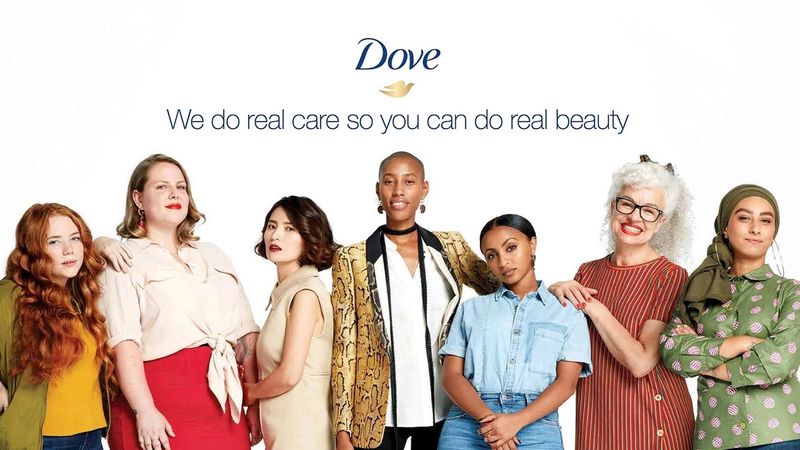Brand Communities – Getting Started

Brand or Cause led communities are probably the best ways to grow a brand. However starting off should be well- planned.
If you work in marketing, you’ve probably heard about the terms ‘brand community’ from your bosses.
You may have a rudimentary understanding of how to get started, such as by increasing your social media presence and offering a limited number of “loyal consumers” a discount.
Is this, however, how great communities come to be? Is it possible to have a well-rounded brand community strategy?
The success stories of Lego, Apple, Starbucks, Sephora and Harley Davidson might serve as inspiration for your own company.
What is a brand community?
A brand community isn’t just another jargon; it’s a group of people who have a common interest in your brand, its goods, and the values it stands for.
Customers will spread the word about your company to their family and friends, discuss your items on forums, and (hopefully) open your email newsletters if you have a strong community.
Without an online forum where members can exchange ideas and interact with the brand, this community will not expand.
It’s important to bring your social media followers to a place where they may have more possibilities for debate, interaction, and involvement in order to establish a strong brand community.
Building a brand community is a customer-focused endeavour. More than your mission statement or brand kit, your most loyal consumers are the “soul” of your business.
As a result, provide a forum for your customers to air their grievances and express their frustrations. It’s important to pay attention to your consumers and speak up when necessary.
2021 -22 trends
The importance of brand communities is developing at an ever-increasing rate.
Isolated Life
As a result of the government’s restrictions and organisational precautions, many workers still haven’t returned to work. And hence there is a lack of daily social interactions.
People are increasingly turning to the web in an effort to connect with others who share their interests. However, this does not imply that people are turning to corporations for help with their social needs. They are searching for a location where they may feel accepted and valued, and where they can have meaningful conversations with people.
This type of community is similar to an informal coffee shop in which the focus is more on social interaction than on the company’s product or service itself.
Believing in what you say
There has been a lot of discussion about social justice and the coming environmental crisis.
People want to know exactly where the company stands. Consumers, particularly those in the Millennial and Gen Z generations, favour brands that support relevant social concerns.
Practise of Authenticity is an important aspect of this. To develop a community around your business, don’t utilise cookie-cutter PR pitches and ads. It will across as hollow.
It’s hard to argue with brands like Patagonia and Ben & Jerry’s, which are known for their outspokenness and dedication. They don’t merely declare their beliefs; they act on them.
Customer loyalty is built on taking action before a major breaking headline story forces your company to make a rapid decision about where it stands on the issue.
Building trust is an investment
There has been a significant drop in sponsored influencer marketing for brands even before the recent events.
In fact, only 4% of those polled in a 2019 report by the media firm UM said they trusted online influencers. Younger people are considerably more aware of this, just as they are of social justice problems.
When it comes time to make a purchase, consumers want to hear from actual people, not internet influencers who charge a lot of money to promote items that they may not even be interested in.
Customers are usually able to see straight through this kind of referral. At this point, it’s a total waste of time and money.
To be clear, engaging with influencers, “thought leaders,” and those in your area who are seen as authorities are still vital. However, a rigorous verification method must be used to ensure authenticity.
Brands must first and foremost know that building trust is getting increasingly difficult. Take it for granted, and you risk losing your fans. Customers are more likely to stay loyal to a brand if they are a part of a community. Your spokespersons should be drawn from the most passionate members of the community.
Community Building for Your Brand
If you’ve been reading about how some of the world’s finest companies have established communities the size of huge countries, getting started with your own brand community strategy could seem difficult.
To get your brand’s community off to a good start, get buy-in from key stakeholders inside your organisation.
- The first step is to locate your micro-community
To find your initial community cohort, go to your existing customers, social media accounts, email lists, and personal relationships in the real world. Find out whether your consumers have already formed a community on Facebook to discuss your business and product. If your customers and user-generated material are scattered all over the place, it’s time to bring them together under one umbrella.
The best place to start is with clients who have already shown a commitment to your brand and who are willing to spread the word about it to others.
Having a team of at least a dozen members, you can begin the process of progressively introducing them to one another and creating a direct line of contact.
Your best clients could be included in an exclusive email list where you can share case studies of fascinating use cases and planned updates that address their specific pain concerns.
In this step, you’ll discover what your current community’s demands are and how they behave. It’s okay if they don’t interact much in the beginning if they don’t. It takes time to build a great community.

2. Online resources might be tapped for this step.
Make sure you know your current community and how they interact before you invest in a “home base” for them. From the brand community to social media, the community can spread.
Your branded community, in particular, provides a tremendous deal of control, customization, and data ownership. How your community members engage with your brand can be tailored to your preferences.
When a company launches, it is common practice for the firm’s marketing staff to put up a social media presence. Here, the idea is to go beyond considering your Instagram comments like members of your tribe.
Two-way dialogues between your brand’s community and social media sites can be a key component of effective online engagement. One way to do this is to use Instagram Stories to host Q&A sessions. E-commerce and lifestyle firms often spend a lot of time and money on social media.
Reward schemes and affiliate programmes are a more conventional means of retaining consumer loyalty. The “conversation and cooperation paradigm” of a brand community can easily be combined with this. When it comes to customer retention, reward programmes can be a powerful tool in your arsenal. For many years, Starbucks’ app-based Rewards Program served as the poster child for this trend. Remember that if you ever have to reduce the discounts that your customers are receiving, they will not be pleased with you.

Many internet business niches have taken use of affiliate programmes. Using a tracking link that you provide, clients can act as “affiliates” for your business and earn a commission on any purchases they generate.
If you’re looking to establish a strong case against your competitors in a high-involvement buy, you can find popular bloggers to evaluate your product and help you do so.
It is also possible to create a community that resembles a mix of any of these ways by using third-party community platforms (and more). Community software that incorporates the best practices and design patterns of today’s most popular social networks should be considered
3. Manage the members of the community.
The real challenge arises once you have established an online brand community. It’s a tricky balancing act to figure out how much control you should have over the interactions of your new brand evangelists.
You may find some of the most successful brand communities in the world by allowing your community to take charge and figure out how to use the place you’ve built.
A good example of this is Sephora. For the first time in 2010, they opened their Beauty Talk forum, where customers could post images of themselves wearing their favourite cosmetics and connect them to the related product pages.
Create an online community (which was desperately needed after their social media pages were overwhelmed with product questions) and watch as Sephora’s devoted customers helped first-timers fall in love with the company.
Your own brand ambassadors can be found without paying influencers — they’re often eager to offer their knowledge
4. Get the community involved.
Create a strategy for engaging the community and keeping it engaged. There are a number of things you need to do before you can begin to build a community.

How to Engage a Brand-Led Community
- Make the system for generating community contributions more fun. To give an example, you can award points for various actions and occurrences, such as obtaining an upvote on a post, contributing a post, or answering a question.
- Organizing games and competitions for your members and awarding them for their participation.
- Keep an eye on the stuff that attracts the most attention. For example, if you notice that videos or AMAs with industry experts are attracting a lot of attention from the community, plan out a content calendar for these kinds of posts.
- Plan regular activities with your members to keep them involved and keep them coming back. Product clinics could be held regularly by a software company to link community members with the product development team.
From the moment you sign up for the service, put an emphasis on keeping customers engaged. There is a lot of value in encouraging new members to participate in icebreaker sessions and encouraging them to post introductions.
5. Keep tabs on important metrics and work to improve them.
It is imperative that your community’s aim be clearly defined, vital metrics be derived, and the same be rigorously measured. Only by demonstrating a positive return on investment (ROI) can your efforts and investments in the community be justified.
The metrics can be broken down into the following groups:
- User-generated content’s effectiveness
- Metrics for the growth of the community
- Metrics of community participation
- Community support for the organization’s mission
It’s critical to realise that your work isn’t done until you’ve worked hard to build your community and seen them interact with one another and develop a devotion to your business.
Despite the fact that brand communities exist to foster relationships among members, it is also about implementing the changes that they want and making them feel heard.
For a thriving brand community, here are a few key points for you to remember.
- User-generated content (UGC) is a major selling point for most social media platforms.
- It’s a terrific brand community because it brings together a wide range of brand interests into one place.
- As the community grows and develops, so does the opportunity to form networks of like-minded individuals.
- The public and private views of community members are bolstered by an excellent brand community.
- There is an allure that goes beyond the product or service in a strong brand community.



